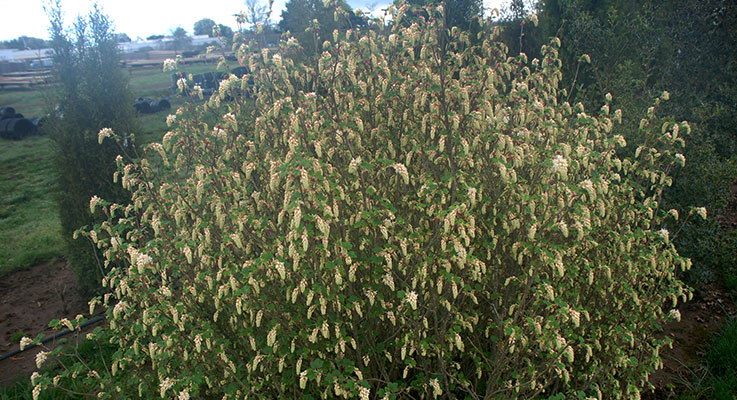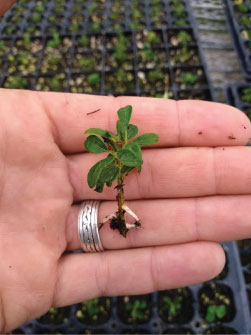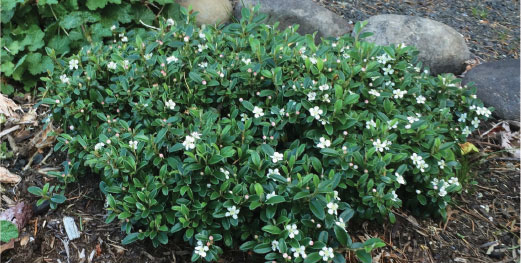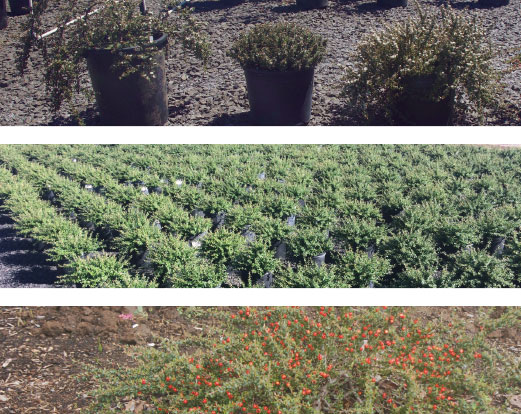
Figure 1: Original plant of Ribes sanguineum ‘Oregon Snowflake’ planted in 2012. Photo taken spring 2019. Photo courtesy of Oregon State University
The Ornamental Plant Breeding Program at OSU is beginning to hit its stride and new cultivars are hitting the market – carrying the hopes of making a positive impact on the industry.
Established in 2010, the Ornamental Plant Breeding Program at Oregon State University has worked to develop plants that work in production for landscapers and homeowners. The art and science of breeding new woody plants is a long-term enterprise, and after almost a decade we have plants that are starting to enter the market.
Only time will tell what the ultimate impact of these plants will be, but we are moving in the right direction. Our first few releases are described below along with a sneak preview of what may be expected in the next 3–5 years.
I love feedback and input on the direction of the program, so please send me a message. I am a public breeder at the Land Grant institution of Oregon here to serve the needs of the public. If you are interested in licensing these cultivars you may contact Denis Sather, senior licensing associate, at [email protected] or 541-737-8806.

Figure 2. Rooted cutting of Emerald Sprite™ three weeks after sticking. While this is on the extreme side of what most growers may do, it illustrates its speed and ability to root from small cuttings to facilitate rapid increase. Photo by Tyler Hoskins
‘Oregon Snowflake’ flowering currant
Native plants, particularly pollinator-friendly plants, are hot. Flowering currant (Ribes sanguineum) is a great native species that flowers early in spring to provide pollinators with some resources when few other plants are flowering.
It tends to be rather low input with regard to water and nutrients, making it more attractive still. Unfortunately, from my perspective, after it flowers it loses many of its positive attributes.
The species and available cultivars are too large for many modern gardens. Without somewhat regular pruning, they can become leggy and unsightly. Because of this, I set out to develop a better form of flowering currant that would fit into the smaller garden of most modern homes and require less pruning to maintain an attractive habit.
I selected ‘Oregon Snowflake’ in 2011 for its highly dissected foliage. It was propagated from stem cuttings to produce plants that were included in a replicated field trial. In that trial we observed that ‘Oregon Snowflake’ was much more compact and densely branched than other flowering currant cultivars.
Since planting in 2012, the original plant (Fig. 1) has maintained a highly branched habit that is superior to other available cultivars. It is floriferous and has the added interest of dissected leaves that improves as the season progresses. Native plants are hot, and this is one that we believe is a marked improvement over others available in the trade.

Emerald Sprite™ in the Contreras garden shows off its glossy foliage, pink buds, and moderate to heavy flowering. Photo courtesy of Oregon State University
Cotoneasters
Perhaps your heart does not go aflutter when you think about cotoneasters. However, I maintain that not everything we grow has to be “sexy” — some things just need to work.
Consider how many boxwoods have been grown and sold in the last 25 years. Now, unfortunately, consider how much boxwood blight has decimated that market.
While there is some really great work going on by various breeders to develop resistant cultivars, I have taken the approach of improving other genera to fill the gap as boxwood replacements. This has included work on Cotoneaster and Pyracantha, primarily.
Our primary goals for cotoneasters have been fire blight resistance and good form; both of which I think we have achieved. There are four plants we hope to release but two have made it through the process with considerable industry support.

Figure 4. Emerald Sprite™ plants respond well to greenhouse forcing and will have slightly larger foliage and more rapid growth, as do most plants. Photo courtesy of Oregon State University
Cotoneaster × suecicus ‘OSUCOT1’ Emerald Sprite™
This cute little cotoneaster is a bit of a departure from what you may think of for the genus. It roots in about 3–4 weeks at more than 90 percent from softwood tip cuttings treated with 1000ppm Wood’s under mist. Propagators looking to be aggressive and increase numbers will find that even tiny cuttings respond well and will root quickly (Fig. 2).
Production is similarly rapid, and a quart will finish in 8–10 months, which we envision being on the larger size container for this diminutive cultivar. Further, it requires no pruning in production, making it highly efficient for growers. We think homeowners will like this plant for its low-input culture. Additionally, it is really petite and will not overtake the small modern landscape (Fig. 3). It is thrifty on water, though likely will be fuller with some summer irrigation, and does not need pruning in the landscape.
Other compact cultivars such as ‘Tom Thumb’ may fit the bill for “low prune” but growers have indicated it is too slow in production.
Feedback so far has shown this is not the case for Emerald Sprite™. It tops out at about 12 inches with a spread of 30 inches, flowers well, has attractive foliage, and genrally just thrives in production (Fig. 4). In our greenhouse studies, it has been resistant to a common virulent race of the pathogen while ‘Coral Beauty’ was susceptible, exhibiting 11 percent shoot necrosis. I cannot assert it will be resistant to all races in all environments, but it also has performed well in Davis, California under drought stress and disease inoculation.

Top: Figure 5. Plants produced without pruning to compare natural form. ‘Coral Beauty’ (left), Emerald Sprite™ (center), and Emerald Beauty™ (right). Middle: Figure 6. Two-year-old plants of Emerald Beauty™ that were tip pruned when potting from liner to #1 and again when potting into #3. We think this plant is a winner for growers. Bottom: Figure 7. Emerald Beauty™ in the landscape on campus at Oregon State University exhibiting heavy fruit production. photo courtesy of Oregon State University
Cotoneaster × suecicus ‘OSUCOT2’ Emerald Beauty™
This cultivar, as its name suggests, fits the same niche as ‘Coral Beauty’ but exhibits some significant improvements. First, it has exhibited improved fire blight resistance with only 1 percent shoot necrosis compared to 11 percent in ‘Coral Beauty’. It has proven to have improved branching when compared to ‘Coral Beauty’ when left unpruned (Fig. 5), but responds extremely well to tip pruning when transplanting.
Two-year-old plants that were pruned when transplanting from a liner to #1 and then again when transplanting to a #3 are extremely uniform. They produce a quality plant with fewer “touches” than ‘Coral Beauty’ (Fig. 6). This cultivar will finish a quart in 6–8 months and a trade gallon in 10-12 months. It roots at greater than 90 percent in a similar timeframe to Emerald Sprite™, perhaps slightly faster. It is floriferous and has heavy fruit set, similar to ‘Coral Beauty’ (Fig. 7).
The future
We have some other exciting developments on the way and are continually seeking input from growers to see which plants hit the mark and which are lacking that “something.” We moved ahead with these cultivars based on industry support and we hope they serve the needs of growers, retailers, landscapers, and homeowners alike.
Please stay tuned for future releases and send along comments, questions, or input — we’re listening!
Download a pdf of this article
Dr. Ryan Contreras is an associate professor of ornamental plant breeding, in the department of horticulture at Oregon State University. He can be reached at [email protected].


